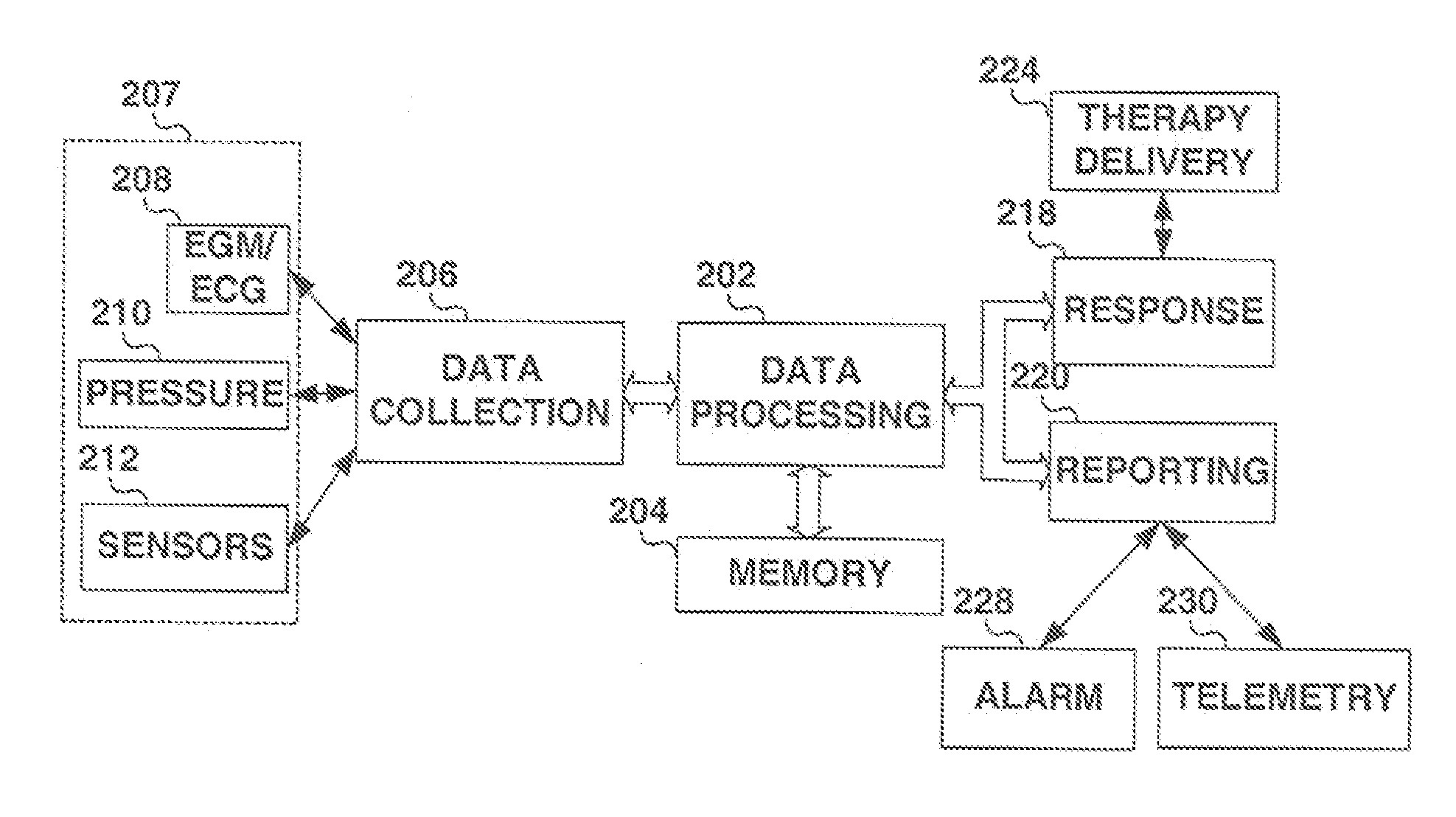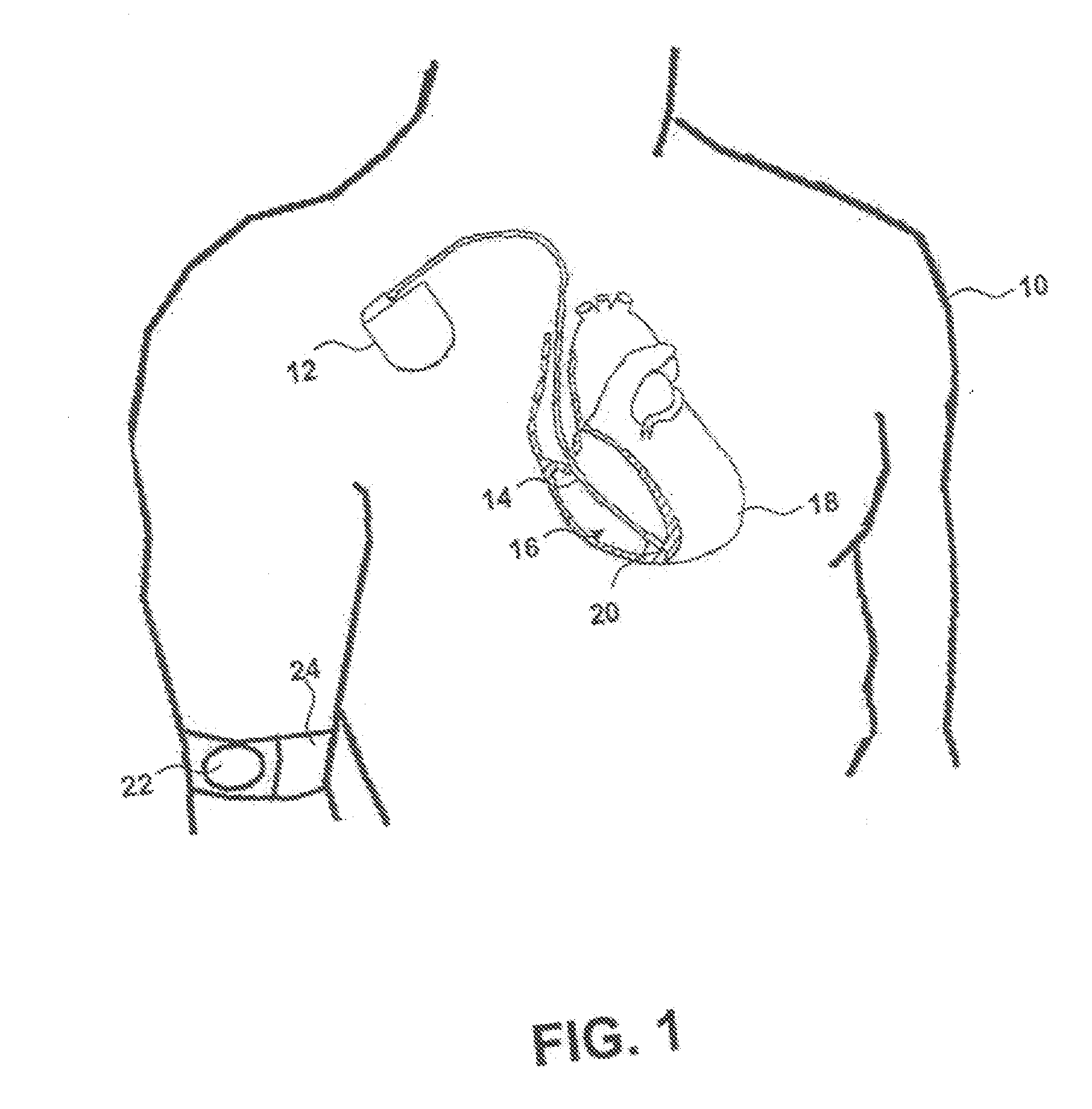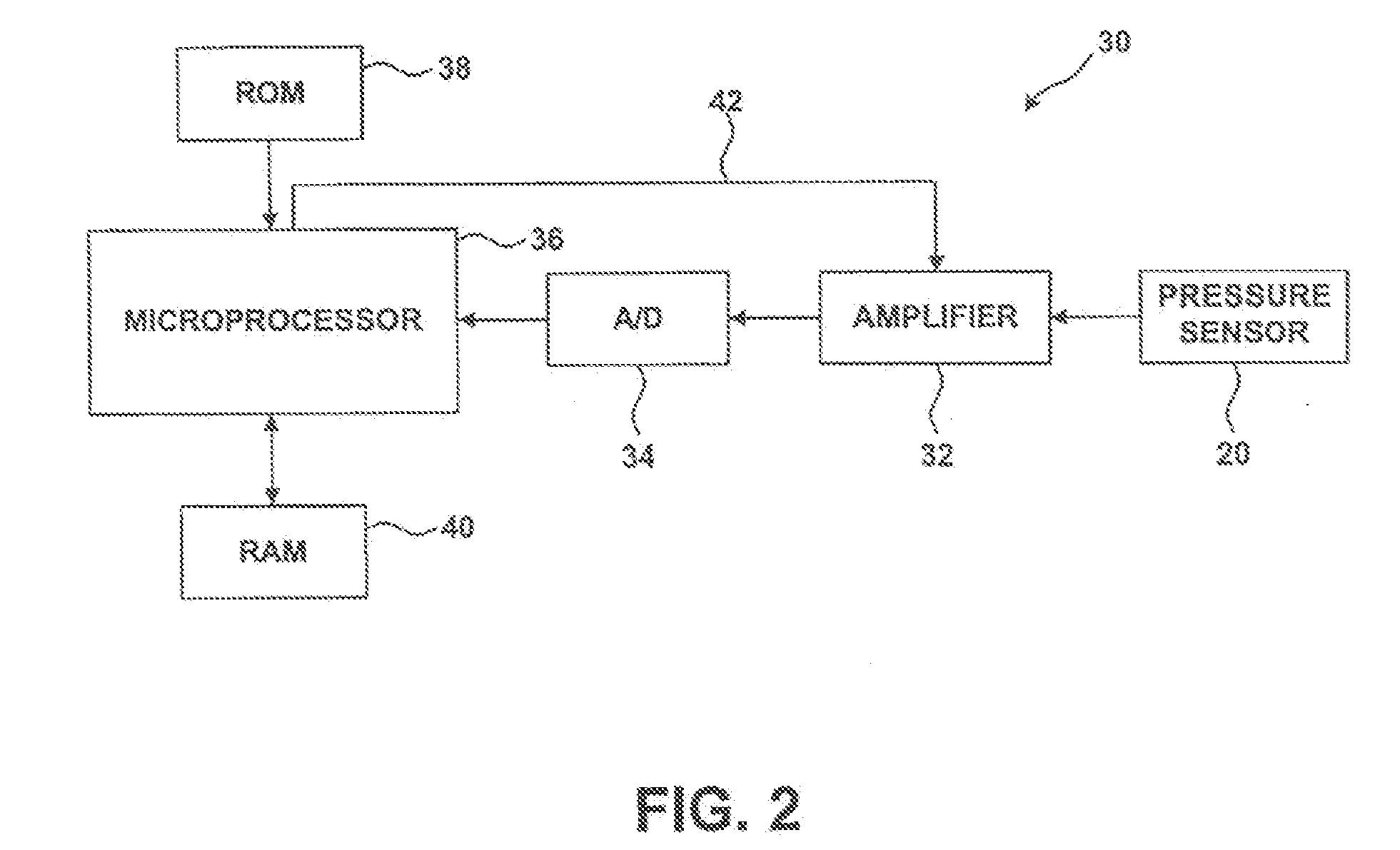Selectable switching of implantable sensors to provide fault toleance for implantable medical devices
- Summary
- Abstract
- Description
- Claims
- Application Information
AI Technical Summary
Benefits of technology
Problems solved by technology
Method used
Image
Examples
Embodiment Construction
[0027]FIG. 1 is a diagram of a body of a patient 10 having an implantable medical device (AIMD) 12 according to one embodiment of the present invention. As depicted in FIG. 1 lead 14 operatively couples to circuitry (not shown) within the AIMD 12 and extends into the right ventricle 16 of the heart 18. A chronically implantable pressure sensor 20 is shown disposed within a portion of a right ventricle (RV) 16 and couples to lead 14. The pressure sensor 20 monitors and measures changes in blood pressure in the RV 16. The blood pressure in RV 16 is a function of factors such as the volume of RV 16, the pressure exerted by the contraction of heart 18 and the ambient pressure around patient 10 and the blood pressure varies throughout the cardiac cycle as is well known in the art. While a pressure sensor 20 is depicted in FIG. 1 diverse other sensors can directly benefit from the teaching of the present invention as noted hereinabove.
[0028] In one form of the invention the AIMD 12 recei...
PUM
 Login to View More
Login to View More Abstract
Description
Claims
Application Information
 Login to View More
Login to View More - R&D
- Intellectual Property
- Life Sciences
- Materials
- Tech Scout
- Unparalleled Data Quality
- Higher Quality Content
- 60% Fewer Hallucinations
Browse by: Latest US Patents, China's latest patents, Technical Efficacy Thesaurus, Application Domain, Technology Topic, Popular Technical Reports.
© 2025 PatSnap. All rights reserved.Legal|Privacy policy|Modern Slavery Act Transparency Statement|Sitemap|About US| Contact US: help@patsnap.com



